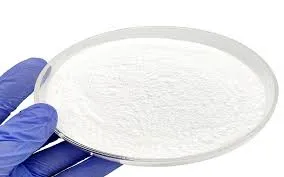Understanding Cationic PAM Applications and Benefits
Cationic polyacrylamide (Cationic PAM) is a versatile polymer widely used in various industries due to its unique properties and effectiveness. This water-soluble polymer is known for its cationic (positively charged) characteristics, which enable it to interact effectively with negatively charged surfaces, such as anionic colloids, organic matter, and negatively charged particles in water. As such, Cationic PAM has found extensive applications in water treatment, papermaking, and various other industrial processes.
The Structure and Properties of Cationic PAM
Cationic PAM is synthesized from acrylamide and cationic monomers. This polymer can be tailored to have different molecular weights and charge densities, allowing for flexibility in its applications. Its primary feature, the cationic charge, facilitates its use in environments with anionic contaminants, enhancing flocculation and coagulation processes.
The efficacy of Cationic PAM in binding with particles and suspensions enhances sedimentation and improves solid-liquid separation. This property is particularly important in various industries where clarity and purity of water are paramount.
Applications in Water Treatment
Cationic PAM is predominantly used in municipal and industrial wastewater treatment processes. The polymer acts as a flocculant, helping to aggregate fine particles and suspended solids into larger flocs, which can then be readily removed from water through sedimentation or filtration. The ability to decrease the turbidity of water effectively makes Cationic PAM invaluable in ensuring that water meets regulatory standards and is safe for discharge or reuse.
Notably, its application is not confined to wastewater treatment alone. Cationic PAM is also effective in enhancing the performance of sludge dewatering processes, thus reducing the volume of residual sludge generated in treatment plants. The reduction of sludge not only cuts down on disposal costs but also minimizes the environmental impact of wastewater treatment operations.
Role in the Paper Industry
cationic pam

In the papermaking industry, Cationic PAM plays a vital role as a retention aid. During the paper production process, fibers and fillers often tend to disperse in water; however, the introduction of Cationic PAM helps improve the retention of these materials on the paper surface. This leads to improved paper strength and quality while reducing the amount of raw materials required. The efficacy in retaining surface charges also aids in ink retention, which is crucial for printed materials.
Moreover, the use of Cationic PAM can enhance the formation of paper sheets, ensuring better uniformity and fewer defects, thus increasing production efficiency.
Benefits of Using Cationic PAM
The benefits of using Cationic PAM extend beyond water clarification and paper production. Its ability to form stable flocs enables other applications such as soil stabilization and enhanced oil recovery. In agriculture, Cationic PAM can be used to reduce erosion and improve soil moisture retention, showing its versatility as a soil conditioner.
Additionally, Cationic PAM is a critical component in various personal care products, making the polymer multifaceted. In cosmetics, it is utilized as a conditioning agent that helps improve the texture and performance of formulations.
Environmental Considerations
While Cationic PAM is highly effective in its applications, it is essential to consider its environmental impact. The polymer’s biodegradability is a critical factor; modern advancements ensure that the versions used today can degrade in natural environments without causing significant harm. This aspect aligns with the growing trends towards sustainability and greener practices in industrial applications.
Conclusion
Cationic PAM is a powerful tool across many industries, providing significant benefits ranging from improved water treatment processes to enhanced paper production efficiency. As industries continue to seek more effective and sustainable solutions, the role of Cationic PAM is likely to expand further, contributing positively to both economic and environmental objectives. Understanding its properties and applications is crucial for harnessing its full potential in various fields, promoting innovation and sustainability.

